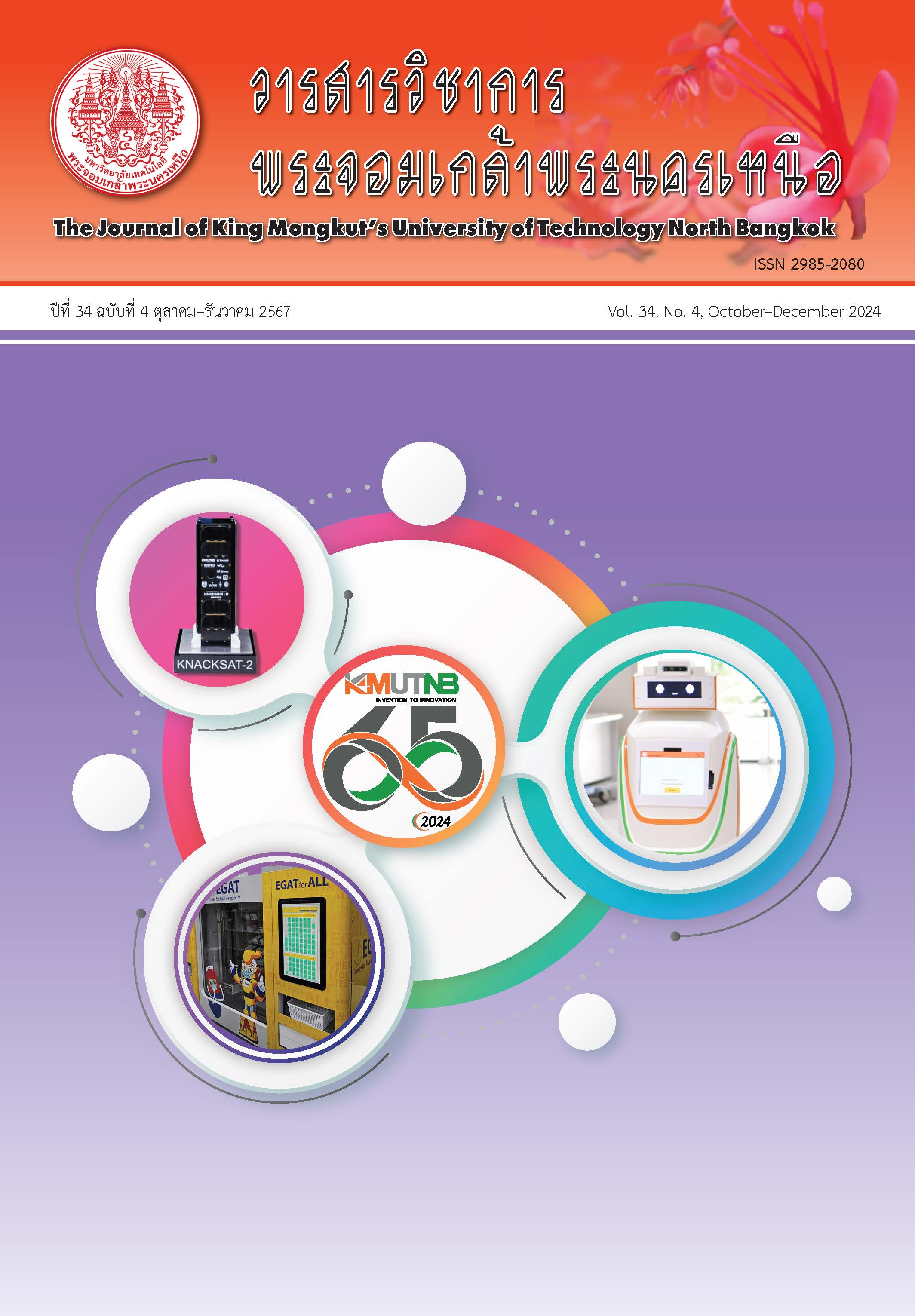การพัฒนาอุปกรณ์เคลื่อนย้ายวัสดุในโรงงานผลิตสีแห่งหนึ่งตามหลักคาราคุริไคเซ็น
Main Article Content
บทคัดย่อ
จากการศึกษาสภาพปัจจุบันของโรงงานกรณีศึกษาซึ่งเป็นโรงงานผลิตสีพบว่า มีการเคลื่อนย้ายวัสดุที่สำคัญจำนวน 7 จุดในกระบวนการผลิตสี ซึ่งการเคลื่อนย้ายวัสดุจัดเป็นกิจกรรมที่ไม่เพิ่มมูลค่าแก่ผลิตภัณฑ์แต่จำเป็น งานวิจัยฉบับนี้ได้ออกแบบอุปกรณ์เคลื่อนย้ายวัสดุในแนวดิ่งโดยการใช้หลักการคาราคุริไคเซ็น (Karakuri Kaizen) และเสนอแนวคิดจุดที่ต้องระมัดระวังในการออกแบบดังกล่าว หลักการคาราคุริไคเซ็นเป็นการใช้กลไกพื้นฐานมาสร้างกลไกการเคลื่อนที่กึ่งอัตโนมัติอย่างง่าย และประหยัดพลังงาน ในงานวิจัยนี้ปัญหาที่สำคัญที่สุดจะถูกเลือกมา และถูกแก้ปัญหาด้วยการออกแบบอุปกรณ์ขนถ่ายวัสดุขึ้นมาโดยต้องรับวัสดุจากชั้น 2 ลงมายังชั้น 1 และกลับขึ้นไปรอรับวัสดุที่ชั้น 2 อีกครั้ง มีการออกแบบอุปกรณ์ขึ้นมา 2 แบบ เปรียบเทียบข้อดีข้อเสีย และต้นทุน จากนั้นสร้าง และทดสอบอุปกรณ์เคลื่อนย้าย สรุปว่ามีระยะทางในการเคลื่อนย้ายลดลง ร้อยละ 77.6 และใช้เวลาในการเคลื่อนย้ายลดลง ร้อยละ 89.47
Article Details

อนุญาตภายใต้เงื่อนไข Creative Commons Attribution-NonCommercial-NoDerivatives 4.0 International License.
บทความที่ลงตีพิมพ์เป็นข้อคิดเห็นของผู้เขียนเท่านั้น
ผู้เขียนจะต้องเป็นผู้รับผิดชอบต่อผลทางกฎหมายใดๆ ที่อาจเกิดขึ้นจากบทความนั้น
เอกสารอ้างอิง
C. F. Stiefkens, “Low cost logistics solutions,” in Lean Management Solutions for Contemporary Manufacturing Operations, G. Taboada, Ed. Bentham Science Publishers, 2021, pp. 69–78.
Mostori. (2022, October). Karakuri Kaizen: Continuous Quality Improvement, [Online]. Available: https://www.mostori.com/blog_ detail.php?b_id=91
T. Bock, T. Linner, J. Güttler, and K. Iturralde, Ambient Integrated Robotics: Automation and robotic technologies for maintenance, assistance, and Service. New York: Cambridge University Press, 2019.
The Institute for the Promotion of Teaching Science and Technology (IPST). [Online]. Available: http://designtechnology.ipst.ac.th/wp-content/uploads/sites/83/2019/01/ใบความรู้เรื่องเฟืองและรอก.pdf [Accessed: 05-Jun-2022].
D. Anggrahini, Y. Prasetyawan, and S. Indriyani Diartiwi, “Increasing production efficiency using karakuri principle (A case study in Small and Medium Enterprise),” in IOP Conference Series: Materials Science and Engineering, 2020, Art. no. 012117.
I. Mašín and T. Riegr, “Dynamic characteristics of the karakuri transport trolley,” in Proceedings of the 6th International Conference on Trends in Agricultural Engineering, 2016, pp. 398–403.
E. Shamsudin, S. A. A. Darus, P. S. A. Shah, P. Behrang, M R. H. Raja, and Z. Abidin, “Implement karakuri as a material handling in production sealer line,” in Proceedings of Greentech 2019, 2019, pp. 66–75.
Y. P. Paraponiaris and A. M. Rodríguez, “Product development of material supply: Implementation of karakuri kaizen,” Dissertation, 2019.
Y. Prasetyawan, A. Arifiyana Agustin, and D. Anggrahini, “Simple automation for PINNEAPLE processing combining with Karakuri design,” IOP Conference Series: Materials Science and Engineering, 2020, Art. no. 012102.
A. Tangl and I. Vajna, “The results of lean productivity development combined with karakuri kaizen method,” in Proceedings of 8th International Conference on Management (ICoM 2018), 2018, pp. 614–619.
P. Chanchaichujit and P. Smithmaitrie, “Management of a multi-robots system for industrial material handling,” The Journal of KMUTNB, vol. 29, no. 3, pp. 454–464, 2019.
K. Kanjanawanishkul, S. Sreelohor, T. Nuantoon, P. Stapornteera, P. Chaniang, and J. Hopper, “Development of a transporting and dispensing vehicle for a liquid chemical drum,” The Journal of KMUTNB, vol. 29, no. 3, pp. 408–420, 2019.

